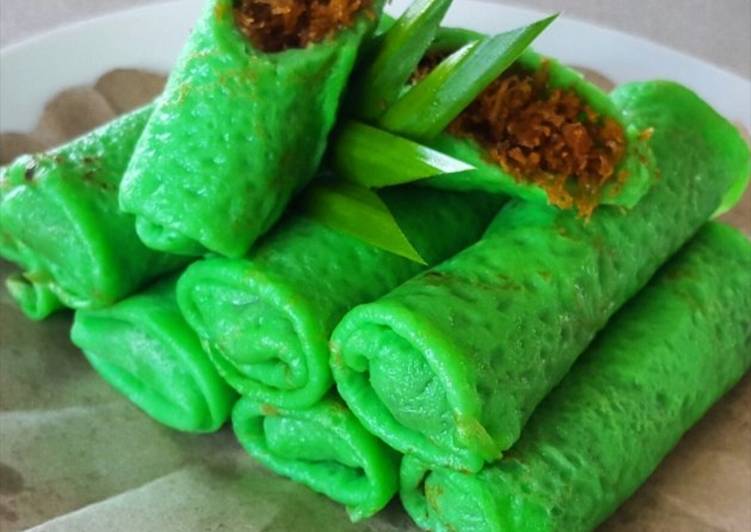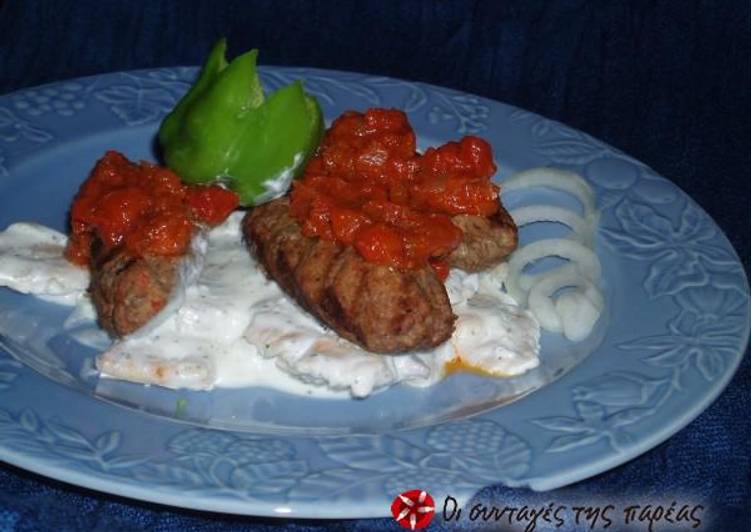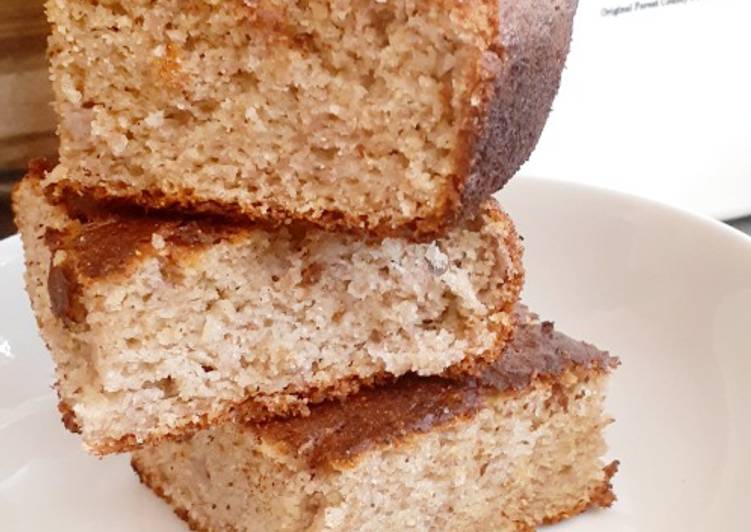
Hello everybody, I hope you are having an amazing day today. Today, we’re going to prepare a distinctive dish, indonesian pancake roll with coconut filling. It is one of my favorites. For mine, I’m gonna make it a bit tasty. This is gonna smell and look delicious.
Indonesian Pancake Roll with Coconut Filling is one of the most well liked of recent trending foods on earth. It is appreciated by millions every day. It is easy, it’s quick, it tastes delicious. They’re fine and they look fantastic. Indonesian Pancake Roll with Coconut Filling is something which I’ve loved my entire life.
A sweet dessert hailing from Indonesia, dadar gulung translates to rolled pancake. The pancakes are infused with pandan and coconut milk, while the filling - known as unti kelapa - is a decadent mix of coconut, palm sugar and pandan leaf (duan pandan). You'll usually find these at morning markets throughout Indonesia.
To get started with this recipe, we have to first prepare a few ingredients. You can cook indonesian pancake roll with coconut filling using 14 ingredients and 10 steps. Here is how you cook it.
The ingredients needed to make Indonesian Pancake Roll with Coconut Filling:
- Get For the Pancake :
- Take 250 gram all purpose flour
- Take 2 eggs
- Prepare 300 gram coconut milk
- Prepare 1/2 teaspoons salt
- Take 100 ml water
- Take 2 teaspoon pandan paste or any grean coloring
- Get For the Filling :
- Prepare 250 gram finely grated coconut
- Prepare 100 gram palm sugar
- Prepare 100 ml water
- Take Pinch salt
- Prepare Pandan leaves (optional)
- Get 1 tablespoons vanilla extract
Fold one side of the crepe over the filling, then fold in the sides and roll up tightly into a cylinder. Assemble the remaining crepes in the same manner. Note: The crepes and Coconut Filling can both be made in advance and refrigerated. When the pancakes are cool, take a spoonful of your filling mixture and place it in a strip in the middle of the pancake.
Steps to make Indonesian Pancake Roll with Coconut Filling:
- To make pancake batter combine flour, salt, eggs, and coconut milk. Mix
- Add water while stirring until the batter has a thin consistency. Exactly how much water varies depending on whether you used coconut milk or coconut cream (which is thicker
- Beat the batter to remove lumps. Add a few drops of pandan paste or green food colouring.
- To make the filling combine the coconut, sugar, salt, vanilla extract, water in a pot on the stove. Add torn up pandan leaves to the mixture if you have.
- Mix continuously on a medium heat for about 5 minutes, or until water has evaporated and the mixture is moist (not dry). Do not let the mixture burn.
- Remove from heat and remove the pandan leaves. Set aside.
- Put some butter in a heated pan on the stove spread it around the pan.
- Spoon some batter into the centre of the pan and spread it to the edges by swirling your wrist.
- Flip after a minute, or when there are bubbles on the pancake and it has cooked through.
- Put pancake on a plate when cooked. - Then take one by one of the pancake and - put about a tablespoon of the filling in the middle of the pancake and spread it a little with the back of the spoon. Flip the bottom of the pancake over the mixture before folding each side of the pancake in like a tortilla. Continue to roll it.
Fold the sides of the pancake in, fold the bottom up, then roll it upwards to finish it (see the diagram). Repeat the process until you have a nice big pile of pancake rolls! Dadar literally in Indonesian means 'pancake' while gulung means 'to roll'. Inside has sweet grated coconut as a filling, and usually the pancake has green-coloured which comes from Pandan leaves. Pandan is an herbaceous tropical plant with long green leaves which can be found throughout Indonesia.
So that’s going to wrap it up with this special food indonesian pancake roll with coconut filling recipe. Thank you very much for reading. I am sure you will make this at home. There is gonna be interesting food in home recipes coming up. Remember to save this page in your browser, and share it to your loved ones, friends and colleague. Thank you for reading. Go on get cooking!


